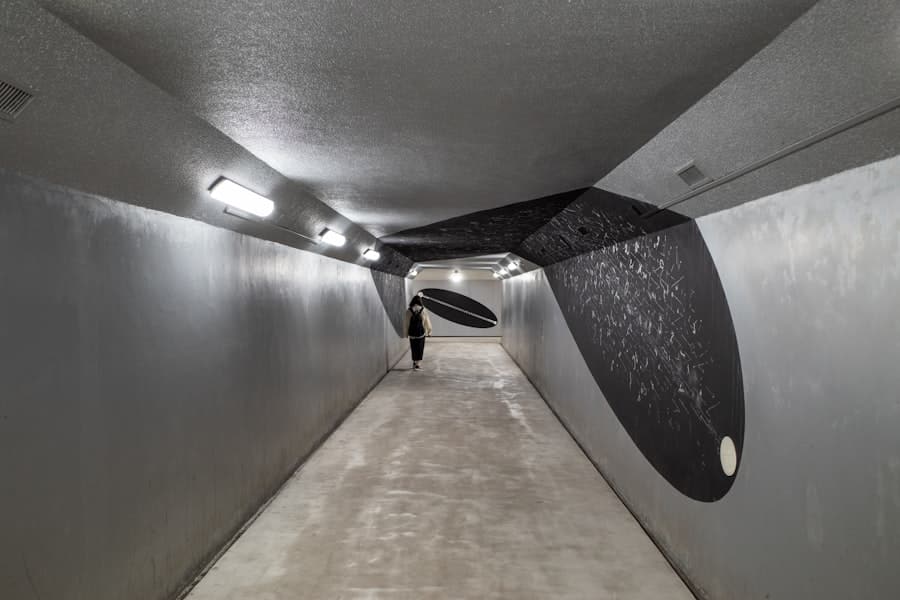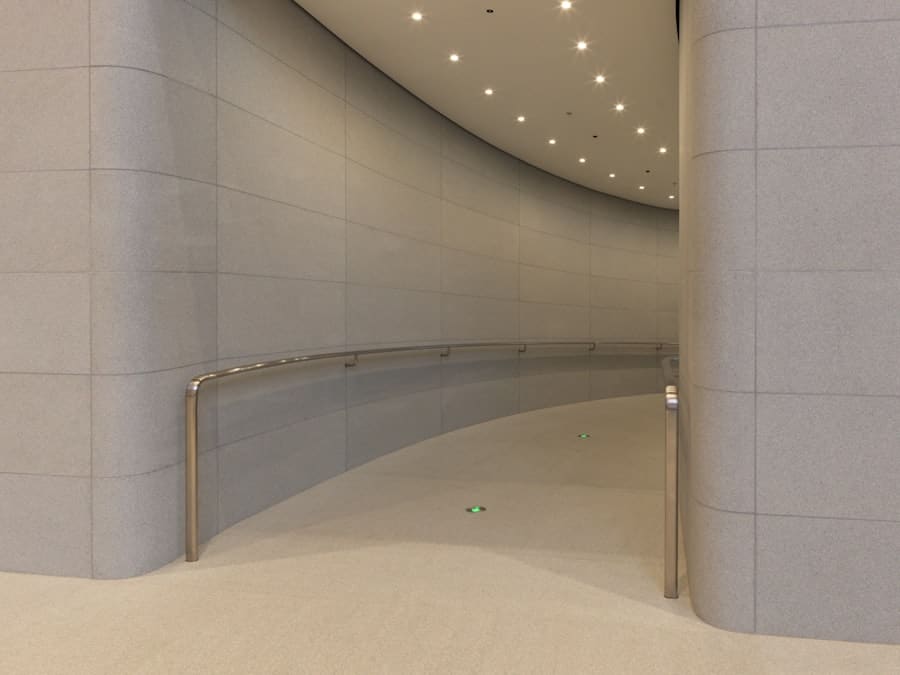The advent of 5G technology has ushered in a new era of connectivity, enabling a myriad of applications that were previously deemed impractical or impossible. Among these innovations, the concept of 5G-powered drone corridors stands out as a transformative approach to urban logistics and delivery systems. These corridors are designated airspaces where drones can operate autonomously, leveraging the high-speed, low-latency capabilities of 5G networks.
This integration of advanced telecommunications with unmanned aerial vehicles (UAVs) promises to revolutionize how goods are transported within urban environments, addressing the growing demand for efficient delivery solutions. As cities grapple with increasing populations and the corresponding rise in e-commerce, the need for innovative delivery methods has never been more pressing. Traditional delivery systems often face challenges such as traffic congestion, limited parking, and environmental concerns.
In contrast, 5G-powered drone corridors offer a solution that not only alleviates these issues but also enhances the overall efficiency of urban logistics. By utilizing dedicated airspace for drones, cities can streamline delivery processes, reduce road traffic, and minimize the carbon footprint associated with conventional delivery vehicles.
Key Takeaways
- 5G-Powered Drone Corridors are set to revolutionize urban delivery by enabling faster and more efficient transportation of goods.
- Advantages of 5G-Powered Drone Corridors include reduced delivery times, lower operational costs, and decreased traffic congestion in urban areas.
- Challenges and Concerns of Implementing 5G-Powered Drone Corridors include air traffic management, privacy issues, and public acceptance of drone technology.
- Regulatory and Legal Considerations for 5G-Powered Drone Corridors are crucial for ensuring safe and responsible operation of drones in urban airspace.
- Impact on Urban Infrastructure and City Planning will be significant as cities adapt to accommodate drone takeoff and landing zones, as well as charging and maintenance facilities.
Advantages of 5G-Powered Drone Corridors for Urban Delivery
Efficient and Rapid Deliveries
One of the most significant advantages of 5G-powered drone corridors is their ability to facilitate rapid and efficient deliveries. The ultra-reliable low-latency communication (URLLC) provided by 5G networks allows drones to navigate complex urban environments with precision. This capability is particularly beneficial for time-sensitive deliveries, such as medical supplies or perishable goods, where speed is of the essence.
Safe and Timely Arrivals
Drones equipped with advanced sensors and real-time data processing can make split-second decisions to avoid obstacles, ensuring safe and timely arrival at their destinations.
Environmental Benefits
The use of drone corridors can significantly reduce the environmental impact associated with urban deliveries. Traditional delivery vehicles contribute to air pollution and traffic congestion, exacerbating urban challenges. In contrast, electric drones operating within designated corridors can minimize emissions and noise pollution. Studies have shown that drone deliveries can reduce carbon emissions by up to 90% compared to conventional delivery trucks. This shift not only benefits the environment but also aligns with the growing demand for sustainable practices among consumers and businesses alike.
Challenges and Concerns of Implementing 5G-Powered Drone Corridors
Despite the promising advantages of 5G-powered drone corridors, several challenges must be addressed before widespread implementation can occur. One of the primary concerns is safety. The integration of drones into urban airspace raises questions about potential collisions with other aircraft, buildings, or even pedestrians.
Ensuring that drones can operate safely in densely populated areas requires robust safety protocols and advanced collision avoidance systems. Additionally, public perception plays a crucial role; residents may have concerns about privacy and noise associated with drone operations. Another significant challenge is the technological infrastructure required to support 5G-powered drone corridors.
While 5G networks are being rolled out in many urban areas, coverage may still be inconsistent in certain regions. For drone operations to be reliable and efficient, comprehensive network coverage is essential. Furthermore, the development of drone traffic management systems is necessary to coordinate multiple drones operating simultaneously within the same airspace.
This requires collaboration between telecommunications companies, drone manufacturers, and regulatory bodies to create a cohesive framework for safe and efficient drone operations.
Regulatory and Legal Considerations for 5G-Powered Drone Corridors
The establishment of 5G-powered drone corridors necessitates a thorough examination of regulatory and legal frameworks governing airspace usage. Current aviation regulations primarily focus on manned aircraft, leaving a gap in legislation concerning unmanned aerial vehicles. Regulatory bodies such as the Federal Aviation Administration (FAA) in the United States are actively working to develop guidelines that address the unique challenges posed by drone operations in urban environments.
These regulations must encompass aspects such as flight altitude restrictions, no-fly zones, and operational limits to ensure public safety. Additionally, liability issues present another layer of complexity in the regulatory landscape. In the event of an accident involving a drone—whether it be a collision with another aircraft or damage to property—determining liability can be challenging.
Clear legal frameworks must be established to delineate responsibilities among drone operators, manufacturers, and service providers. Furthermore, privacy concerns related to data collection by drones must be addressed through legislation that protects individuals’ rights while allowing for technological advancement.
Impact on Urban Infrastructure and City Planning
The implementation of 5G-powered drone corridors will have profound implications for urban infrastructure and city planning. As cities adapt to accommodate drone operations, there will be a need for designated takeoff and landing zones strategically located throughout urban areas. These zones must be integrated into existing infrastructure while considering factors such as accessibility and safety.
Urban planners will need to collaborate with technology providers to design spaces that facilitate seamless drone operations without disrupting pedestrian or vehicular traffic. Moreover, the introduction of drone corridors may influence zoning laws and land use policies. Areas previously designated for commercial or industrial use may see a shift in purpose as businesses leverage drone delivery services to enhance their logistics capabilities.
This could lead to a reimagining of urban landscapes, with an emphasis on creating multifunctional spaces that support both traditional commerce and emerging technologies. As cities evolve to incorporate these new transportation modalities, they will also need to invest in public education campaigns to inform residents about the benefits and safety measures associated with drone operations.
Potential Economic and Environmental Benefits of 5G-Powered Drone Corridors
Streamlined Supply Chains and Improved Customer Satisfaction
Companies that adopt drone delivery systems can streamline their supply chains, leading to faster turnaround times and improved customer satisfaction. For instance, retailers could utilize drones to deliver products directly from warehouses to consumers’ doorsteps within minutes, significantly reducing reliance on traditional logistics networks.
New Job Opportunities and Environmental Benefits
This shift could also create new job opportunities in sectors related to drone maintenance, operation, and regulation. From an environmental perspective, the benefits of implementing drone corridors are equally compelling. As cities strive to meet sustainability goals, integrating electric drones into urban logistics can play a pivotal role in reducing greenhouse gas emissions.
Reducing Energy Consumption and Improving Air Quality
The potential for drones to operate autonomously within designated corridors minimizes energy consumption compared to conventional delivery vehicles that often sit idle in traffic or search for parking spaces. Furthermore, by decreasing reliance on fossil fuel-powered transportation methods, cities can contribute to cleaner air quality and improved public health outcomes.
Future Outlook and Expansion of 5G-Powered Drone Corridors
Looking ahead, the future of 5G-powered drone corridors appears promising as technology continues to advance and urban areas adapt to new logistical paradigms.
As public acceptance grows and regulatory frameworks become more defined, we can expect an expansion of drone corridor initiatives across various cities worldwide.
Moreover, partnerships between private companies and government entities will be crucial in driving innovation within this space.
As cities embrace smart technologies and prioritize sustainable practices, 5G-powered drone corridors will likely become an integral component of urban logistics strategies.
The Role of 5G-Powered Drone Corridors in the Future of Urban Delivery
In summary, 5G-powered drone corridors represent a significant leap forward in urban delivery systems, offering numerous advantages while also presenting challenges that must be navigated carefully. The potential for rapid deliveries, reduced environmental impact, and economic growth underscores the importance of this innovation in addressing contemporary urban logistics issues. As cities continue to evolve in response to technological advancements and changing consumer demands, the integration of drone corridors into urban planning will play a pivotal role in shaping the future landscape of delivery services.
The successful implementation of these corridors hinges on collaboration among stakeholders across various sectors—technology providers, regulatory bodies, urban planners, and the public—ensuring that safety, efficiency, and sustainability remain at the forefront of this transformative initiative. As we move forward into an era defined by connectivity and innovation, 5G-powered drone corridors will undoubtedly emerge as a cornerstone of modern urban infrastructure.
In a world where technology is constantly evolving, the future of urban delivery is being shaped by advancements in 5G-powered drone corridors. These corridors are set to revolutionize the way goods are transported in urban areas, making deliveries faster and more efficient. For more insights on the latest tech trends, check out this article on top trends on TikTok for 2023. It’s clear that technology is changing the way we live and work, from remote work solutions to content optimization tools like NeuronWriter. To stay ahead of the curve, be sure to also read about the best laptop for remote work today and how to boost your content with NeuronWriter SEO NLP optimization.
FAQs
What are 5G-powered drone corridors for urban delivery?
5G-powered drone corridors are designated airspaces in urban areas that are equipped with 5G technology to facilitate the safe and efficient delivery of goods using drones.
How do 5G-powered drone corridors work?
5G-powered drone corridors utilize high-speed 5G networks to enable real-time communication and data exchange between drones, ground control stations, and other relevant infrastructure. This allows for seamless navigation and coordination of drone deliveries in urban environments.
What are the benefits of 5G-powered drone corridors for urban delivery?
Some of the benefits of 5G-powered drone corridors for urban delivery include faster delivery times, reduced traffic congestion, lower carbon emissions, and improved accessibility to remote or hard-to-reach areas.
What are the challenges of implementing 5G-powered drone corridors?
Challenges of implementing 5G-powered drone corridors include regulatory hurdles, privacy concerns, air traffic management, infrastructure requirements, and public acceptance of drone technology in urban areas.
What is the future outlook for 5G-powered drone corridors?
The future of 5G-powered drone corridors looks promising, with ongoing research and development efforts aimed at addressing the challenges and expanding the use of drone technology for urban delivery. As technology advances and regulations evolve, 5G-powered drone corridors are expected to play a significant role in the future of logistics and transportation.



